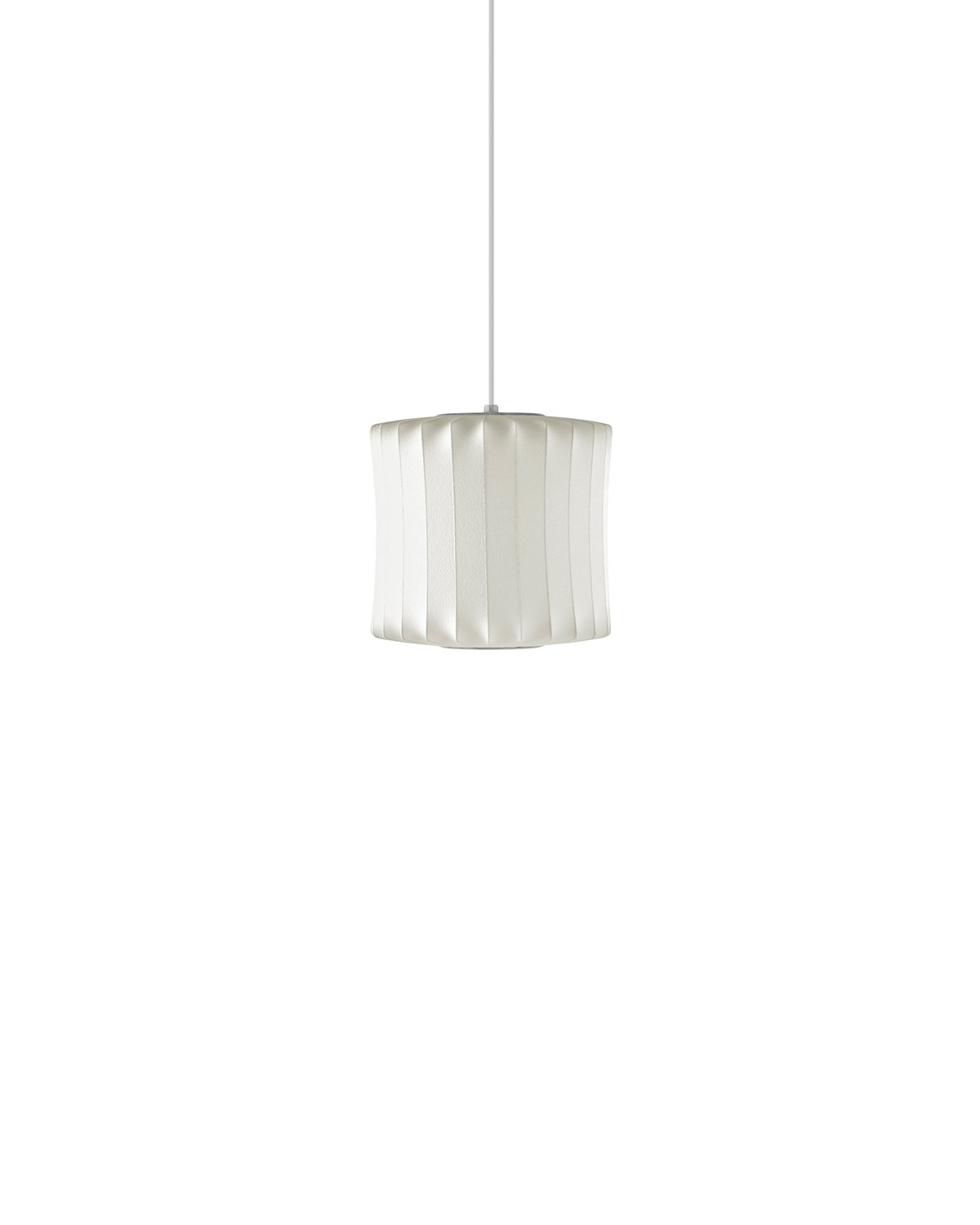Nelson Saucer Bubble Pendant
- Designer:
- George Nelson
- Brand:
- Herman Miller
We don't appear to have any products related to your search term. Please try again.
Shipping and discount codes are added at checkout.


While outfitting his office, architect and Herman Miller design director George Nelson discovered a silk-covered Swedish hanging lamp that he coveted but found too expensive. He then recalled seeing a photo in the paper of Liberty ships being mothballed “by having the decks covered with netting and then being sprayed with a self-webbing plastic,” which got him thinking. “And then, Whammo!” Inspiration struck, and by the next night, Nelson had designed his first Bubble Lamp (1952) by spinning a skeleton of steel wires on a turntable and shooting it with translucent plastic until it was covered in a smooth, washable film. “When you put a light in it, it glowed,” he said. This is the authentic Bubble Lamp, produced in partnership with the George Nelson Foundation. Bulb (not included): LED, CFL or incandescent; E26 base; 60W max for small, 150W max for others. UL Listed.
While outfitting his office, architect and Herman Miller design director George Nelson discovered a silk-covered Swedish hanging lamp that he coveted but found too expensive. He then recalled seeing a photo in the paper of Liberty ships being mothballed “by having the decks covered with netting and then being sprayed with a self-webbing plastic,” which got him thinking. “And then, Whammo!” Inspiration struck, and by the next night, Nelson had designed his first Bubble Lamp (1952) by spinning a skeleton of steel wires on a turntable and shooting it with translucent plastic until it was covered in a smooth, washable film. “When you put a light in it, it glowed,” he said. This is the authentic Bubble Lamp, produced in partnership with the George Nelson Foundation. Bulb (not included): LED, CFL or incandescent; E26 base; 60W max for small, 150W max for others. UL Listed.
Designer
George Nelson was a renowned American industrial architect, writer, designer and teacher, considered the founder of American modernist design.
Brand
Herman Miller® is a pioneer in the furniture industry, an innovator whose human-centered, problem-solving approach to design has introduced new ways of living and working for over 100 years.

